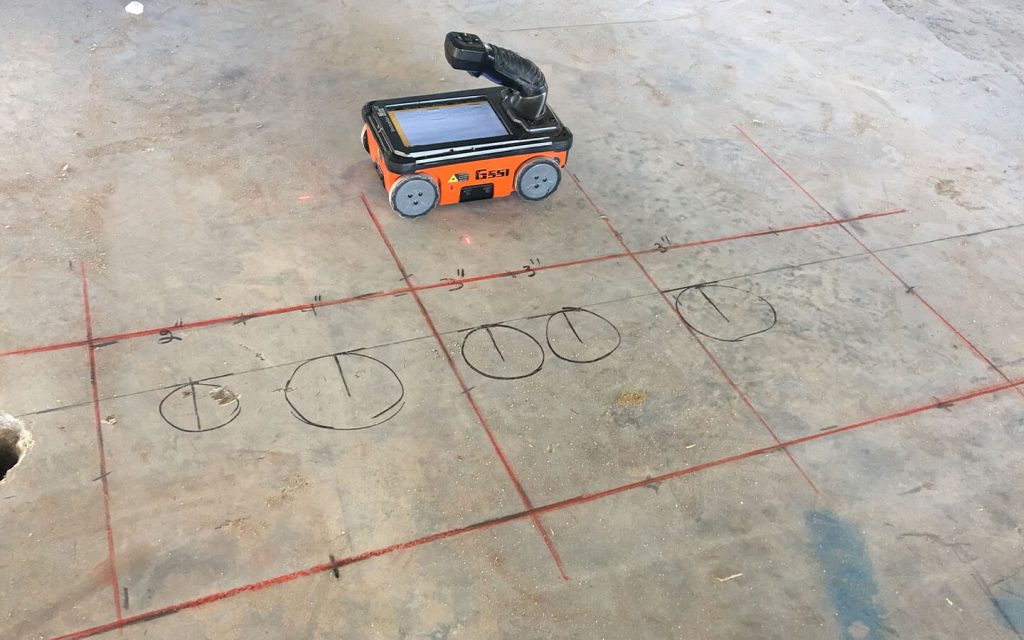Beyond the Surface Area: Leveraging Advanced Concrete Scanning Techniques for Unmatched Precision and Insight
In the realm of construction and infrastructure upkeep, the pursuit for accuracy and thoroughness is incessant. Advanced concrete scanning methods have actually become crucial devices in this search, supplying a glimpse below the surface area to introduce a world of important understandings. By using sophisticated innovations, experts can uncover anomalies, evaluate the condition of concrete frameworks, and make notified decisions that form the program of jobs. The effects of these techniques expand much beyond plain surface-level examinations, guaranteeing a depth of accuracy and understanding that is unequaled.
Significance of Advanced Concrete Scanning
The significance of using innovative concrete scanning methods hinges on the unmatched precision they use for spotting sub-surface abnormalities and guaranteeing structural integrity. By using advanced modern technologies such as ground-penetrating radar (GPR), electromagnetic induction, and progressed finder imaging, construction specialists can delve under the surface of concrete structures with a level of accuracy that far exceeds typical assessment methods. Concrete Scanning. These methods enable the identification of surprise risks like rebar deterioration, voids, conduits, or post-tension cords that can jeopardize the security and security of a framework gradually
Moreover, progressed concrete scanning gives important insights into the total problem of a concrete aspect without the requirement for intrusive actions, minimizing the risk of causing damage during the evaluation process. The capability to determine the specific area and deepness of possible issues allows for targeted repair services and maintenance, eventually prolonging the lifespan of the framework and optimizing its performance. Essentially, the relevance of advanced concrete scanning can not be overemphasized in the world of building and construction and facilities upkeep, where accuracy and reliability are critical.
Kinds Of Cutting-Edge Technologies

Anomalies and Problem Discovery

Along with GPR, concrete scanning strategies like thermography and impact-echo testing are additionally reliable in discovering anomalies and problems. Thermography utilizes infrared technology to identify variations in surface temperature, suggesting potential areas of issue such as delamination or wetness ingress. On the other visit the site hand, impact-echo testing includes examining acoustic reactions to spot voids, fractures, and other problems within the concrete. By leveraging these advanced techniques, professionals can proactively deal with structural problems, ensuring the long life and security of concrete frameworks.
Assessing Concrete Problem
Just how can engineers properly evaluate the condition of concrete frameworks to ensure their durability and safety? Different advanced concrete scanning methods are used for this purpose. Ground-penetrating radar (GPR) is typically used to evaluate the inner structure of concrete, identifying voids, fractures, and various other anomalies that may compromise its strength.
Combining non-destructive screening techniques with visual evaluations allows for an extensive assessment of concrete condition, making it possible for engineers to identify possible problems early on and apply prompt upkeep or repair work. By leveraging these advanced techniques, engineers can ensure the long-term durability and safety of concrete structures.
Enhancing Decision-Making Procedures
In the world of facilities management, optimizing decision-making processes is critical for making certain the effective maintenance and longevity of concrete frameworks. Improved decision-making procedures in concrete monitoring entail making use of sophisticated scanning methods to gather detailed information on the condition of frameworks. By leveraging innovations such as ground-penetrating radar and 3D imaging, stakeholders can make enlightened decisions concerning repair, support, or substitute techniques.
These advanced scanning techniques provide very useful insights right into the internal structure of concrete, identifying potential problems such as spaces, cracks, or deterioration that may not be noticeable on the surface. This level of in-depth info permits proactive upkeep planning, lessening the risk of structural failures and enhancing the total life-span of concrete structures.
In addition, by integrating electronic paperwork and evaluation devices into the decision-making process, stakeholders can track the advancement of concrete conditions over time, enabling predictive maintenance methods and maximizing source allowance. Inevitably, the assimilation of advanced concrete scanning methods boosts decision-making processes by supplying unparalleled accuracy, understanding, and performance in infrastructure administration.
Final Thought
In final thought, advanced concrete scanning methods supply unparalleled accuracy and insight in spotting anomalies, issues, and analyzing the problem of concrete frameworks. By leveraging cutting-edge technologies, decision-making processes can be boosted, bring about more reliable and educated remedies for keeping and repairing concrete infrastructure. These methods play a vital duty in ensuring the safety and long life of concrete structures, making them an important tool in the area of building and construction and design.
Moreover, advanced concrete scanning provides important insights right into the general condition of a concrete component without the demand for intrusive steps, decreasing the danger of causing damages during the analysis process - Concrete Scanning. An additional cutting-edge modern technology is 3D X-ray scanning, which supplies in-depth pictures of the interior structure of concrete, providing important info without the demand for devastating screening. Furthermore, Concrete Cover Meters are utilized to determine the thickness of concrete visit site cover over support bars properly. Improved decision-making procedures in concrete management involve using sophisticated scanning techniques to collect thorough information on the condition of structures.In verdict, advanced concrete scanning methods supply unequaled accuracy and insight in detecting abnormalities, flaws, and evaluating the condition of concrete frameworks
Comments on “The Significance of Expert Concrete Scanning Solutions”